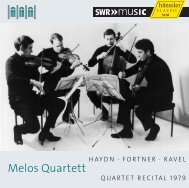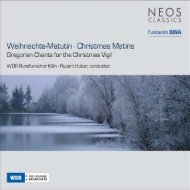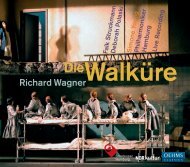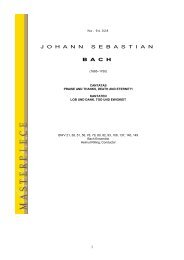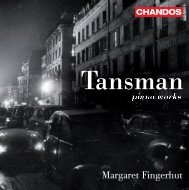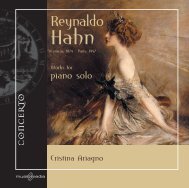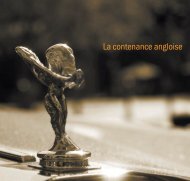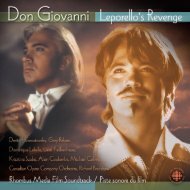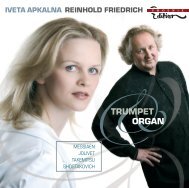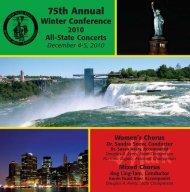ViVAldi - Naxos Music Library
ViVAldi - Naxos Music Library
ViVAldi - Naxos Music Library
Create successful ePaper yourself
Turn your PDF publications into a flip-book with our unique Google optimized e-Paper software.
The sonata for recorder and bassoon (RV 86)<br />
was probably not written for the Pietà since there<br />
is (currently) no evidence supporting the use of<br />
the bassoon at that institution. If this is true,<br />
then the standard of bassoon playing in the north<br />
of Italy must have been phenomenal.<br />
© Adrian Chandler, 2010<br />
¹ Vivaldi was Maestro di Capella da Camera at the court of Mantua<br />
between 1718 and 1720.<br />
² A possible teacher of the recorder at the Pietà was Ignaz Sieber<br />
who we know was employed to teach the oboe and flute. The oboist<br />
Ludwig Erdmann was engaged as a recorder and chalumeau teacher<br />
at the Pietà between 1704 and 1708, but this is too early for the<br />
purposes of Vivaldi’s flautino concertos.<br />
³ This commentary concerned all the Venetian ospedali.<br />
A note on the performance –<br />
a musician’s perspective<br />
Concerto Conca, RV 163<br />
Listeners may notice that this concerto relies<br />
heavily on two chords: the tonic and the dominant.<br />
This is because the conch trumpet, which<br />
Vivaldi was imitating, was restricted to four notes:<br />
the tonic, the tonic above that, the dominant<br />
and another tonic. The superabundance of unison<br />
octaves is explained by Vivaldi’s desire to<br />
conjure up the ear-splitting noise of the conch<br />
which can be heard over two miles away.<br />
Also worth mentioning is Vivaldi’s use of performance<br />
directions; battute, which means<br />
‘beaten’ (found in both fast movements), and<br />
stricciate, a variant of strisciate which translates<br />
as creeping or crawling. This adjective, used<br />
only at the approach of the storm (see above),<br />
appears to indicate the use of unmeasured<br />
tremolo bowing, possibly the earliest example<br />
of this technique after Farina’s Capriccio<br />
Stravagante (1627).<br />
La cetra (MS) Concerto VI, RV 526<br />
As mentioned earlier, the first solo violin part<br />
for this concerto has been reconstructed from<br />
that of the second. Regrettably, musicians are to<br />
this day reticent in handing their music back!




